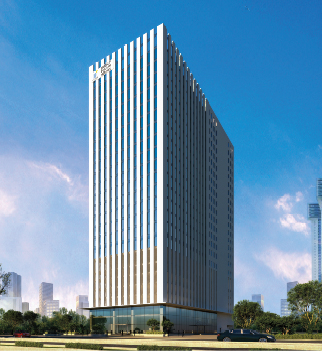
Commercial
From Burnout to Balance: How Workplace Wellness Increases Productivity
April 09, 2025
Burnout among employees is an emerging problem in today's high-stress corporate environment. Long hours, high expectations and constant pressure to deliver have increased stress and mental exhaustion among professionals. Burnout affects employees' health, productivity and overall performance.
Businesses are spending money on workplace wellness initiatives to create equilibrium and accommodate a work culture to combat this. These corporate wellness programs consider employees' physical, mental and emotional well-being, eventually leading to a healthier, more productive group of workers. Employee burnout prevention can help organisations achieve optimum morale, motivation and accomplishment.
What is Employee Burnout?
Burnout is a condition of long-term physical, emotional and mental exhaustion created by prolonged stress in the workplace.
It is characterised by:
- Emotional exhaustion: Experiencing exhaustion and depletion of energy by work demands.
- Depersonalisation: Becoming cynical or detached from others and customers.
- Decreased performance: Loss of effectiveness and motivation leading to decreased productivity.
Causes of Burnout
- Unmanageable Workload: Employees constantly inundated with added work and tight deadlines cannot perform anymore, and they begin to feel fatigued, pressured and eventually burnt out. Inadequate delegation and over-optimistic expectations all contribute to the stress.
- Lack of Work-Life Balance: The employees cannot distance themselves from work without definitive demarcation lines between job and personal spheres. Excessive overtime, late-night emails and endless need to stay available can result in pervasive stress and poor well-being.
- Lack of Managerial Support: An organisation lacking managerial support makes employees feel unsupported and underappreciated. Without direction, feedback and emotional support from managers, employees get discouraged and demotivated, further aggravating burnout.
- Uncertainty of Work Requirements: Employees can't perform their jobs until they are sure of what management is looking for in terms of responsibility or performance. Uncertainty generates stress, fear and uncertainty, which cumulatively reaches a level of burnout.
- Lack of Challenge: Unchallenging and repetitive work and the lack of career prospects make employees lethargic and demotivated. Without challenges to overcome or skills to acquire, employees are disillusioned, which results in mental burnout and detachment from work.
Recent Studies on Workplace Burnout
- A 2023 Gallup survey found that 76% of employees experience burnout at some point.
- The World Health Organization (WHO) has also officially designated burnout a workplace phenomenon and included it in enduring workplace stress.
Workplace Wellness and Productivity
A well-executed workplace wellness program is no longer an expense but an essential element of organisations looking to improve employee productivity and workplace health in general. Those who spend on corporate wellness programs affect performance, engagement and job satisfaction within organisations.
- Increased Productivity: Healthy body and mind employees work better. Harvard research found that well-functioning wellness programs produce 5% more productive workers. When companies invest in burnout prevention strategies, employees are more productive, engaged and dedicated to completing their work.
- Less Absenteeism: Excessive absenteeism due to stress-related illness hampers business processes. Studies show that employees in wellness programs take fewer sick leaves, leading to smoother work and reduced productivity loss.
- Improved Mental Health: Firms that offer mental health treatment, stress management seminars and meditation rooms enable employees to cope with workplace stress more effectively. This improves participation and generates a healthier work environment where employees feel nurtured and valued.
By integrating wellness programs in Brigade offices and coworking facilities, businesses can create a healthier and more productive workplace, guaranteeing long-term business success. Investment in employee well-being ultimately translates to a more productive, innovative and dedicated workforce.
Important Features of Effective Workplace Wellness Programs
1. Physical Well-being
- Providing ergonomic office chairs to prevent posture-based ailments.
- Incorporating gym memberships or fitness centres.
- Encouraging frequent movement through walk-in meetings and stand-up desks.
2. Psychological Well-being Support
- Offering counselling and therapy sessions.
- Creating meditation rooms and stress relief spaces.
- Conducting mindfulness and stress management workshops.
3. Nutritional Healthy Meal Choices
- Filling office cafeterias with healthy meal choices.
- Offering fresh fruits and healthy snacks.
- Allowing hydration and regular mealtime breaks.
4. Flexible Work Schedules
- Offering the ability to work from home.
- Having flexible hours to help workers achieve work-life balance.
- Encouraging mental health days to prevent burnout.
5. Recreational Activities for Employee Well-being
- Encouraging team-building activities such as sports, game rooms and outdoor excursions.
- Organizing wellness retreats, yoga sessions and hobby clubs.
- Creating breakout zones with entertainment options to reduce stress.
- Promoting social events and cultural programs to improve workplace camaraderie.
The Role of Commercial Property in Fostering Workplace Wellness
As organisations recognise the impact of employee well-being on productivity, job satisfaction and retention, commercial properties play a critical role in shaping healthy work environments. Modern office spaces are now designed to enhance physical, mental and emotional well-being, making workplace wellness a strategic priority for businesses.
Designing wellness-oriented workplaces involves the following:
- Natural Light: Daylight in offices can enhance mood and focus.
- Green Spaces: Garden spaces and indoor plants reduce stress and stimulate creativity.
- Collaborative Spaces: Open spaces foster collaboration and creativity.
- Quiet Zones: Quiet spaces are created to support deep work and mental calm.
Benefits to Employers and Property Owners
- Enhanced Employee Retention: A successful workplace wellness program generates job satisfaction and turnover prevention. Supported employees are 2.5 times more likely to stay with their current employer.
- Talent Recruitment: Talent is looking for organisations that believe in well-being. Organisations with wellness-based workplaces, such as Brigade Coworking Spaces, attract talent seeking a healthy work-life balance.
- Increased Property Value: Properties with wellness-based designs are more desirable. Firms pay extra bucks for quality, wellness-based workplace space for employees.
Working on Workplace Wellness Initiatives
Step 1: Assess Existing Workplace Conditions
- Conduct employee surveys to assess wellness needs.
- Examine trends in sick leave and productivity.
Step 2: Create a Tailored Approach
- Combine corporate culture with workplace environment wellness programs.
- Involve leadership in supporting initiatives for well-being.
Step 3: Monitor and Enhance
- Monitor participation rates and employee response.
- Adjust programs to meet evolving workforce requirements.
Example: Effective Employee Wellness Programs
Many multinational companies have incorporated corporate wellness programs and demonstrated their effectiveness in enhancing employee well-being and productivity
- On-Site Wellness Facilities: Providing access to fitness centers, nutritious meals, and relaxation zones to support physical health.
- Mindfulness & Mental Health Support: Offering stress-management training, mindfulness sessions, and resilience workshops to improve emotional well-being.
- Work-Life Balance Initiatives: Implementing flexible work hours, wellness allowances, and remote work options to reduce burnout.
- Campus Vibrancy & Engagement Activities: Running regular employee engagement drives such as wellness challenges, step-a-thons, hobby clubs, cultural celebration days, and "Wellness Wednesdays" to build a lively, connected, and motivated workplace culture.
For instance, the Mixology Masterclass held at Brigade Tech Gardens in collaboration with @barsolutionsllp brought teams together for a fun, interactive session of mocktail making and bonding.
Conclusion
Workplace wellness is no longer optional—it’s essential for fostering a productive, engaged and satisfied workforce. By prioritising workplace wellness programs, companies can build healthier spaces to combat burnout and work stress. With corporate wellness programs becoming increasingly popular, businesses must invest in a well-backed, healthy workforce. Brigade Office Spaces and Brigade Coworking Spaces are wellness-focused commercial properties designed to enhance employee productivity and overall organisational performance.
MUST READ
Looking for something specific?
We'd be delighted to help you.





























































































































































































































































































































































































